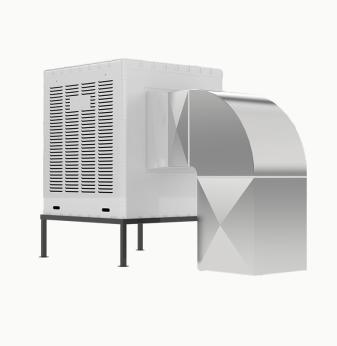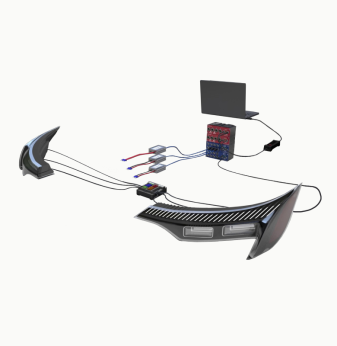Top Tools for Embedded System Debugging and Monitoring in 2025

Getting Started: Why Debugging Tools Are More Critical Than Ever
In 2025, embedded systems power everything from smart home devices and industrial controllers to automotive ECUs and wearables. With growing software complexity, tighter power budgets, and rising security demands, debugging tools have become mission-critical.
This guide explores the most valuable debugging and monitoring tools for embedded systems today — from classic JTAG and logic analyzers to next-gen cloud-based observability platforms.
1. Segger J-Link & Ozone Debugger
Why it stands out:
Industry-standard JTAG/SWD debug probe
Ultra-fast flash programming and RTT (Real-Time Transfer)
Ozone IDE offers live memory, variable inspection, and advanced breakpoints
Use cases: Bare-metal and RTOS-based firmware, industrial automation, low-level MCU debugging
2. Arm Keil MDK with ULINKpro
Why it stands out:
Deep integration with Arm Cortex-M series
RTOS-aware debugging and event tracing
Energy monitoring support (with ULINKplus)
Use cases: Low-power MCU apps, consumer devices, medical firmware
3. Lauterbach TRACE32
Why it stands out:
Best-in-class trace capabilities for complex systems
Multicore debugging, real-time trace, OS-aware analysis
Use cases: Automotive (ASIL compliance), aerospace, advanced SoC debugging
4. Logic Analyzers: Saleae Logic Pro 8/16
Why it stands out:
Simple yet powerful tool for digital signal monitoring
Protocol decoders for I2C, SPI, UART, CAN, etc.
Time-correlated analysis of firmware and I/O behavior
Use cases: Peripheral debugging, timing validation, reverse engineering
5. GDB with OpenOCD + VS Code or Eclipse Embedded IDEs
Why it stands out:
Open-source stack with broad community support
Works with STM32, ESP32, RISC-V and more
Fully customizable workflows with integrated terminal/debugging tools
Use cases: Startup projects, open-hardware designs, education, community-supported SoCs
6. Percepio Tracealyzer
Why it stands out:
RTOS visualization with timeline views and CPU load graphs
Insight into task scheduling, inter-process communication, and event latency
Use cases: Zephyr, FreeRTOS, ThreadX-based projects; industrial and IoT performance tuning
7. IAR Embedded Workbench + C-SPY Debugger
Why it stands out:
Highly optimized compiler with integrated debugging tools
Static code analysis and power estimation
Well-suited for safety-critical applications
Use cases: Automotive, medical, industrial devices requiring certification (ISO 26262, IEC 61508)
8. Renode by Antmicro
Why it stands out:
Open-source simulation framework for testing firmware without real hardware
Supports co-simulation, CI integration, and hardware abstraction
Use cases: Pre-silicon validation, CI/CD for firmware, multi-core emulation
9. PlatformIO + Visual Studio Code
Why it stands out:
Developer-friendly build + debug + test framework
Unified interface across multiple boards and toolchains
Integrated unit testing and remote debugging
Use cases: Prototyping, IoT product lines, rapid firmware iteration
10. Cloud-Based Monitoring: Memfault, Golioth, Datadog Embedded SDKs
Why it stands out:
Cloud-native observability for field-deployed devices
Real-time error logging, device health dashboards, OTA update triggers
Use cases: Smart consumer electronics, wearables, fleet-scale device management

Summary Table: Debugging Tool Highlights
| Tool | Strengths | Ideal Use Case |
| Segger J-Link + Ozone | Fast flash, RTT, advanced breakpoints | Bare-metal MCU firmware |
| Keil MDK + ULINK | RTOS-aware, low-power analysis | Cortex-M, medical & low-power |
| Lauterbach TRACE32 | Trace for multicore and ASIL targets | Automotive, aerospace, safety systems |
| Saleae Logic | Protocol decoding, waveform visualization | Digital interface timing |
| GDB + OpenOCD | Free, customizable, RISC-V friendly | Budget projects, education |
| Tracealyzer | Visual RTOS timeline, task debugging | Performance tuning for RTOS apps |
| IAR + C-SPY | Certified dev chains, static analysis | Mission-critical embedded systems |
| Renode | Hardware-free simulation, CI integration | Early firmware testing, CI/CD |
| PlatformIO + VS Code | Unified, modern IDE + test support | Startups, modular product dev |
| Memfault / Golioth | Fleet observability + OTA/debug insights | Cloud-connected embedded devices |
Real-World Case Study: Debugging an Industrial Controller at Scale
A European OEM developing an industrial controller for automated machinery partnered with Promwad to address repeated firmware crashes during extended field operation.
Challenges:
- Random lock-ups after 72+ hours of continuous operation
- Difficult to reproduce in lab conditions
- Limited access to deployed devices in remote locations
Debugging Strategy Implemented:
- Used Percepio Tracealyzer to visualize task scheduling and trace heap usage over time
- Combined Memfault SDK for crash reporting and device telemetry in the field
- Integrated Segger RTT logs for immediate response from remote units
Outcomes:
- Identified race condition in FreeRTOS task management
- Fixed issue within one sprint and rolled out OTA patch via Golioth
- Reduced field failure rate by 96% in under 30 days
Final Thoughts: Choose Tools That Scale with Your Stack
The best debugging tool isn’t always the most expensive — it’s the one that fits your architecture, your workflow, and your team’s experience.
In 2025, a modern embedded team often uses 3–5 tools in combination: one for low-level debug, one for RTOS tracing, one for cloud observability, and one for collaborative code and version control.
Promwad helps embedded teams choose and integrate the right toolchains for scalable, reliable development — from lab to field.
Our Case Studies in Hardware Design












